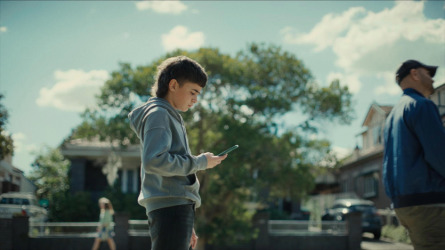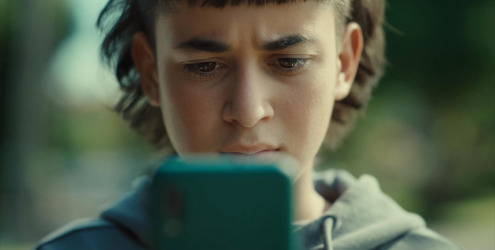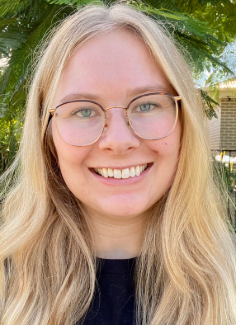Community
Copyright@ Australian Catholic University 1998-2025 | ABN 15 050 192 660 CRICOS registered provider: 00004G | PRV12008
Copyright@ Australian Catholic University 1998-2025 | ABN 15 050 192 660 CRICOS registered provider: 00004G | PRV12008

James is walking the dog with his dad when he feels his phone buzzing. He slows up and pulls it out of his pocket. When he clicks on the screen, he enters a gamified world of misogyny – an echo chamber where men are seen as superior, where harmful tropes are normalised and women are disrespected.
He watches on as an influencer declares that women don’t want men to be kind, “they want you to control them”. He observes a jealous boyfriend slapping his female partner before yelling, “Who were you texting?”.
James finally looks up when his dad calls out, “James, is everything alright?”
Bewildered, the teenager responds, “Yeah. It’s nothing.”
As father and son keep walking, James glances at his phone once more, clicking on the social media ‘like’ button.
This troubling scene forms part a national campaign aimed at addressing what the Australian Government labels as “new influences”, originating in social media, which are “having a significant impact on the attitudes and behaviours of young people towards gendered disrespect”.
In the past year, it has become apparent that the misogynistic attitudes of the so-called “manosphere” – an online collective that disseminates extreme anti-female views to young men – have made their way onto the schoolyard.
At the same time, researchers are sounding alarm bells that both sexism and sexual harassment are rife in Australian schools.
Among them is Gabrielle Hunt, a registered psychologist who is currently undertaking her PhD at the Institute of Child Protection Studies. Her recent findings, based on data from the landmark Australian Child Maltreatment Study, show that one in seven Australian women (or 15.3 per cent) were sexually harassed by a peer – usually a male adolescent known to them – during childhood.
The proportion is higher among those aged between 16 and 24, with one in five women (or 21.2 per cent) experiencing sexual harassment in childhood, and rises even further (35.9 per cent) among those who are gender diverse.
While the prevalence of peer sexual harassment at this young age might be alarming to some, Ms Hunt suspects the figures would not surprise those on the ground.
“I doubt that the shock and surprise in the general community would be replicated among people like the teachers, child protection workers, social workers and psychologists who deal with this issue regularly,” says Ms Hunt, who before moving into academia worked for Bravehearts, an Australian not-for-profit dedicated to protecting children from sexual misconduct.
“We’ve seen that shock reflected in the news stories around some of the recent incidents that have occurred in schools, with parents describing them as ‘graphic’ and ‘sickening’. A lot has changed technology-wise in a very short space of time, and the trends that surround that are quite concerning. If we don’t do something to address the issues underlying this, it won’t get better any time soon.”

As a clinician, Gabrielle Hunt saw firsthand the effect that harmful sexual behaviour can have both survivors and young people displaying such behaviour.
While working with Bravehearts, she was a psychologist in Turning Corners, a program aimed at addressing harm caused and preventing further harm.
This experience helped her to better grasp the complexities of peer sexual assault and abuse, and the many factors at play.
“I started to observe patterns in the things that had gone wrong leading up to a particular young person engaging in harmful behaviour … the system failures and harms at school, in families, in child protection and other social care services,” says Ms Hunt, who worked at Bravehearts until late 2021.
“That’s not to take away the personal responsibility that sits with the young person – but in many cases, you could see that it made sense how they got there.”
This realisation prompted her to turn her focus to research, allowing her to examine the issue from multiple angles. Ms Hunt’s PhD explores risk factors for child sexual abuse in faith-based settings, with an overall goal of identifying and implementing evidence-based prevention strategies.
Her aforementioned study on the prevalence of peer sexual harassment during childhood is the first comprehensive research of its type in Australia, and follows previous studies exploring harmful sexual behaviour in children.
While working directly with young people was important work, Ms Hunt hopes her research will have a positive impact on a wider scale.
“As a clinician I had all this information in my head around people being harmed, but it felt like there wasn’t much I could do with that information,” she says.
“I want to be able to contribute to the understanding of how we should address the issues surrounding harmful sexual behaviour from a primary prevention perspective – to stop it from happening in the first place.”
So, how do we reverse the long-running trend of peer sexual harassment in childhood?
According to Gabrielle Hunt, the key is addressing the cultural issues contributing to the problem.
In her study, Ms Hunt and her co-authors note that peer sexual harassment is “often normalised and tolerated” in our society, seen as “a normal part of a growing interest in sexual activity around the onset of puberty”.
The persistence of ‘boys will be boys’ attitudes is also problematic, the study authors say, acting to “normalise and downplay the seriousness of sexual harassment by peers”.

As for the manosphere and its growing influence on boys like James from our opener, Ms Hunt believes it “absolutely plays a role” in promoting the attitudes that lead to sexual harassment and abuse. She says it’s also likely to have contributed to recent incidents in Australian schools, including the use of sexist and violent language to describe female peers, and the creation of fake pornographic images of female students.
“Children look to popular figures in the media for inspiration,” she says, “and when they’re exposed to people espousing harmful messages online and all their mates are also listening to these people, that’s an incredibly powerful draw.”
Tackling the trend therefore requires a multi-pronged approach, including primary prevention strategies that challenge gender norms, school-based campaigns and public health messages that shift harmful attitudes, and adults having crucial conversations with young people about technology, safety, and respect.
“If we take this issue seriously, we can address the underlying culture of tolerating and normalising sexual harassment and violence by men and boys against women, girls and LGBT+ groups,” she says.
“But it requires a whole-of-system approach. It’s not just parents and schools, it’s sporting organisations, churches, dance groups, and community organisations … we all have a role to play in addressing the cultural problems we see, and we’re all responsible for the goal of keeping our young people safe.”
Gabrielle Hunt is registered psychologist and is undertaking a Doctor of Philosophy as part of the Australian Child Maltreatment Study. Her research and ongoing work is informed by her experience as a psychologist working with survivors of child sexual assault, and young people engaging in harmful sexual behaviours.
Find out more about ACU’s Institute of Child Protection Studies.

Copyright@ Australian Catholic University 1998-2025 | ABN 15 050 192 660 CRICOS registered provider: 00004G | PRV12008